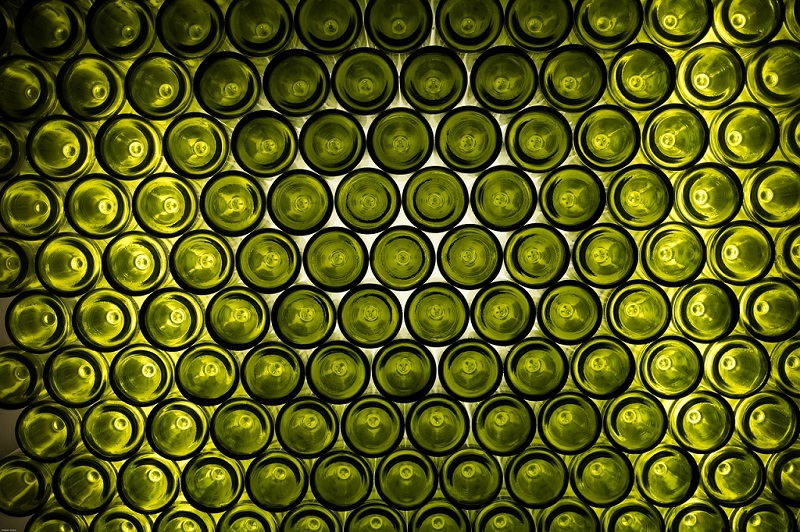Australian Grape & Wine Chief Executive Lee McLean. Photo Hans Mick
In his first column for the Wine & Viticulture Journal as the new Chief Executive of Australian Grape & Wine, Lee McLean questions the underlying logic of proposals by state governments and territories to extend container deposit schemes to include glass wine bottles
Glass is intrinsically linked to the world of wine and will likely remain so for some time. While positive alternative packaging innovations, such as lightweight PET bottles and even paper-based containers, are emerging across the alcohol beverage sector (often filled with very good wine), consumers still generally see the glass bottle as a signifier of quality when purchasing.
Paradoxically, while consumers continue to demand glass wine bottles, increasingly they are also demanding wine producers demonstrate their sustainability credentials, including in relation to carbon emissions, waste and recycling.
This consumer sentiment is manifesting in retailer demands at home and abroad, company sustainability commitments and government policy interventions.
In Australia, the debate about glass recycling has seemingly morphed into a binary debate about whether glass wine and spirit bottles should be included in container deposit schemes (CDS). Every state and territory in Australia either has, or will soon have, a CDS.
Such schemes were originally designed to reduce litter and, to this end, they have been very effective — driving litter reduction and an increase in recycling for those containers that were part of the litter stream, such as soft drink bottles and cans.
However, wine bottles make up less than one per cent of the public litter stream across Australia, with the vast majority being recycled in kerbside recycling bins. For this reason, wine and spirit bottles have been excluded from each of the Australian CDS systems.
So why are a number of state and territory governments considering altering their CDSs to capture wine bottles now and what’s the problem with them from an industry perspective?
Well, governments are keen to bolster their sustainability credentials by responding to the consumer sentiment mentioned above.
With existing CDS infrastructure in place, there is a view that such systems should be retrofitted to capture wine bottles and therefore help meet this public demand for improved rates of glass recycling. But while CDSs are generally popular with the public, the problem is that including wine bottles in a CDS will not deliver better, meaningful improvements in glass recycling.

For example, in the South Australian EPA’s discussion paper on the CDS issue, including wine bottles in the SA CDS would deliver just a 1% increase in collection rates (77-78%). In New South Wales, the EPA estimates an increase in recycling rates of just 0.5% over 20 years.
Similar dismal forecasts for improvement appear across all assessments that I am aware of. The second, often misunderstood, aspect of including wine bottles in CDSs relates to the inequity of costs. The entirety of the cost sits with the filler of the bottle — the winemaker.
And while the reader may consider 10 cents per bottle as a negligible cost, when we apply a conservative costing of 20 cents per bottle (10 cent deposit + administration fees+ GST + labelling changes) and multiply it by the number of bottles sold in Australia, we estimate a $100 million hit to Australia’s wine sector per year.
Wine businesses will struggle to pass on any of this through retail sales channels in a highly competitive environment for wine. $100 million dollars for a 0.5% increase in recycling rates seems like a bad deal to me.
The third concern from an industry perspective relates to the raft of alternative arrangements that appear to deliver better recycling outcomes in a more equitable way, and with fewer carbon emissions.
It is disappointing to see state government EPAs continually neglecting to recognise the potential for alternative arrangements, despite the cost-benefit analyses usually indicating better recycling outcomes.
Indeed, the blind desire to pursue a CDS is so strong in states like New South Wales that its public consultation paper was nearly silent on the fact that its economic modelling showed that a fourth kerbside bin option would result in twice as much waste avoiding landfill sites compared to the EPA recommended inclusion of wine bottles in the CDS (1.4 million tonnes in total).
It also ignored carbon emissions completely, despite recent British glass reporting from December 2021 noting that a well-designed kerbside model would deliver 11% more carbon savings than a CDS (more than two million tonnes of carbon saved by2035) at a collection rate of close to 90% of all glass packaging — much higher than what is forecast to be achieved under a CDS.
To its credit, the Victorian Government is bucking the trend by investing in a fourth kerbside bin for glass, which will bring dual benefits in the form of more glass (it will, for example, collect not only beverage bottles but other containers like pasta sauce jars) and a cleaner feed of other recycling materials by removing glass shards from paper and plastic materials.
Models such as this, or other community and industry-led approaches, have the potential to deliver so much more than a flawed and inequitable CDS model. As a nation, we need to consider if we’re asking the right question. Rather than asking, “how can we include wine bottles in a CDS”, perhaps we should be asking, “what model will deliver the best recycling outcomes for the community?”
We’re encouraging governments to take a step back and think deeply about this so we don’t rush into building a system that’s bad for the wine sector, bad for the environment and bad for rural and regional economies.
This article was originally published in the Autumn 2023 issue of the Wine & Viticulture Journal. To find out more about our quarterly magazine, or to subscribe, click here!





















